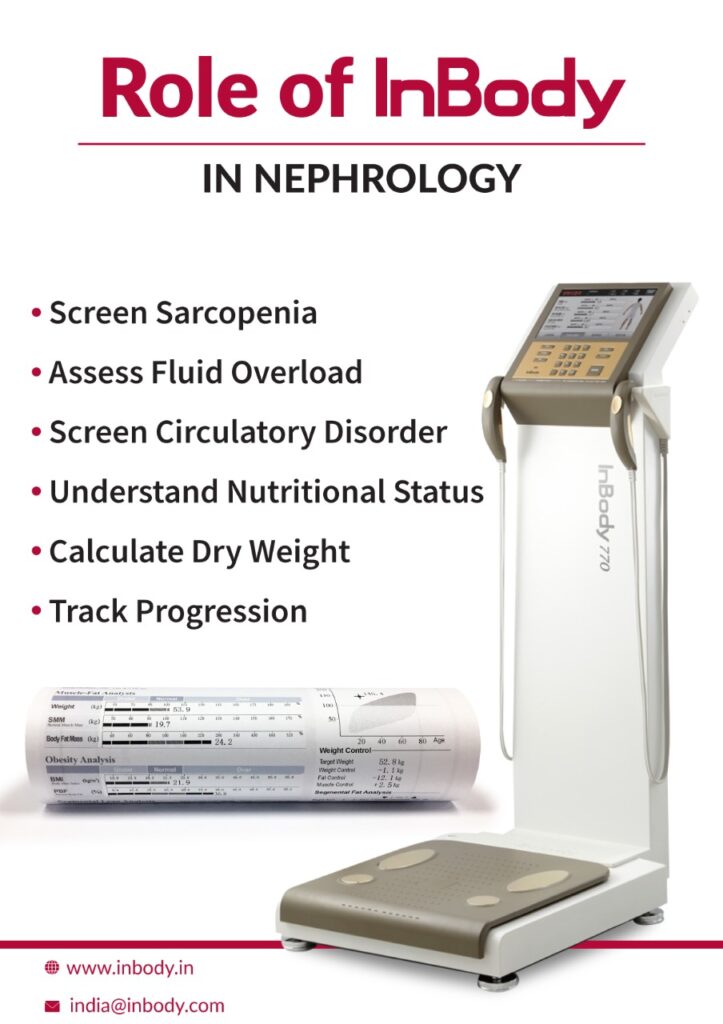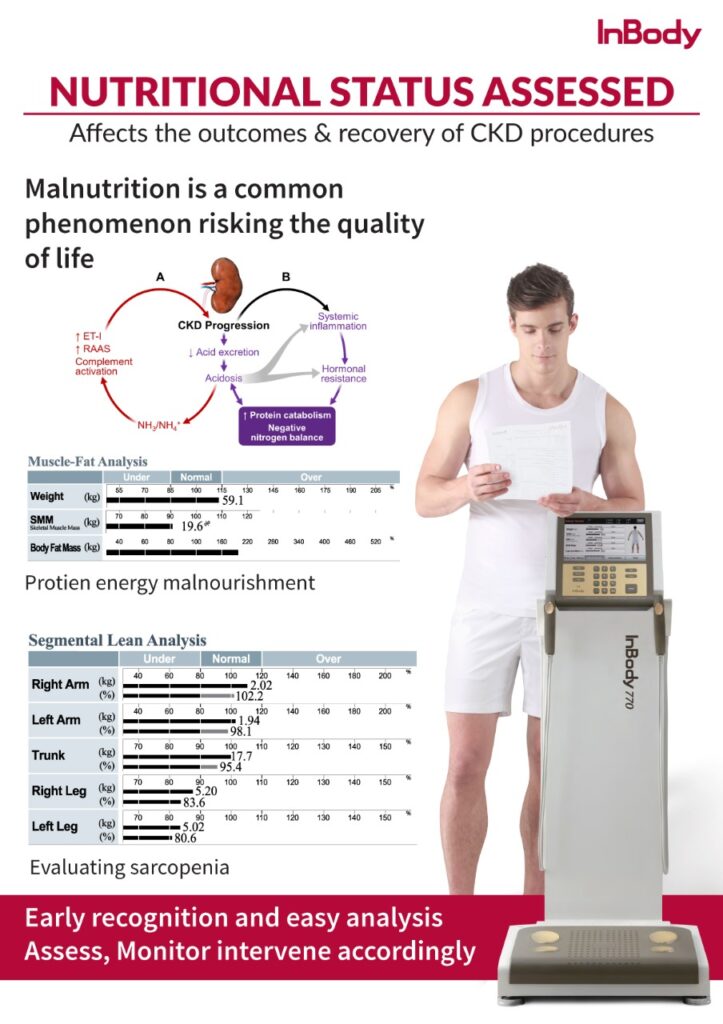
When kidneys troubleshoot, dialysis keeps the body in balance by removing waste, salt and extra water to prevent them from building up. Thus, the assessment of body composition in dialysis patients is very important, given its role in the diagnosis of malnutrition and sarcopenia.
The conventional methods to determine the exact dry weight each time when the patient comes to dialysis can be tedious and most of the times might lead to inaccuracy in results. Leading to misinterpretation of anabolic weight gain and catabolic weight loss in patients, subsequently leading to hypervolemia & hypovolemia.
InBody Analysis monitors the Extra Cellular Water (ECW) Ratio, which helps monitor the precise water level to be maintained and also identifies the exact dry weight. It uses indexes related to body composition such as Basal Metabolic Rate (BMR), Body Cell Mass (BCM), Bone Mineral Content (BMC) and many more to take the guesswork out of dialysis treatments to help identify the most effective treatment options for the patient
Dialysis support for the critically-ill patient with acute renal failure (ARF) can now be under control while keeping the guesswork out of dialysis treatments to help identify the most effective treatment options for the patient and obtain the ideal goal weight. In 60 seconds, professionals can
- Obtain objective fluid measures to guide goal weight management
- Assess muscle and fat mass to make nutritional changes
- Evaluate segmental fluid imbalances to identify circulation issues

Monitoring the water, muscle and fat is mandatory in patients with long term heart diseases, liver diseases and kidney diseases. The MMM Hospital use the InBody S10 for the same.
“Hemodialysis patients, we dialyse them, we send them home. Then they eat food, drink water and they take salt and other spices, so the time they come for the next dialysis, we find that lot of them gain weight and blood pressure also similarly goes up” says Dr Georgi Abraham, Director Nephrologist, The Madras Medical Mission (MMM)Hospital, Chennai.
Findings often suggest that patients who regularly perform resistance training exercise during hemodialysis treatment can significantly improve muscle mass, strength, further quality of life and health status that are important to people with kidney failure.
Researches over the years have also suggested that body water levels, visceral fat, and muscle mass can assess and identify risk factor for kidney related diseases
“Over-hydration as assessed by ECW/TBW is prevalent in adult PD patients, and is associated with loss of residual renal function, inflammation, malnutrition and hypertension.” FAN ET AL., 2012
“BIA is an attractive method because it is safe, easy to use, noninvasive, and relatively low cost. BIA-derived parameters have therefore been investigated as novel nutritional markers, especially in patients with ESRD who are receiving maintenance hemodialysis..” SHIN ET AL, 2017
“MF-BIA was superior…in the evaluation of body water distribution in end-stage renal disease and other clinical disorders of fluid volume and/or distribution and validation for assessment of body water in HD pati. LEE ET AL., 2001
One will not be able to immediately know that their lifestyle and choices are harming their kidneys. Chronic kidney disease progresses slowly over years and can be identified many a times only when they become serious enough to seek medical attention! Simple lifestyle changes and regular assessments can lower the risks of acquiring kidney related diseases as well as maintaining a healthy way of living with the disease too.

Connect now with an InBody representative to know more: 022-622-3191 / inda@inbody.com

Leave a Reply